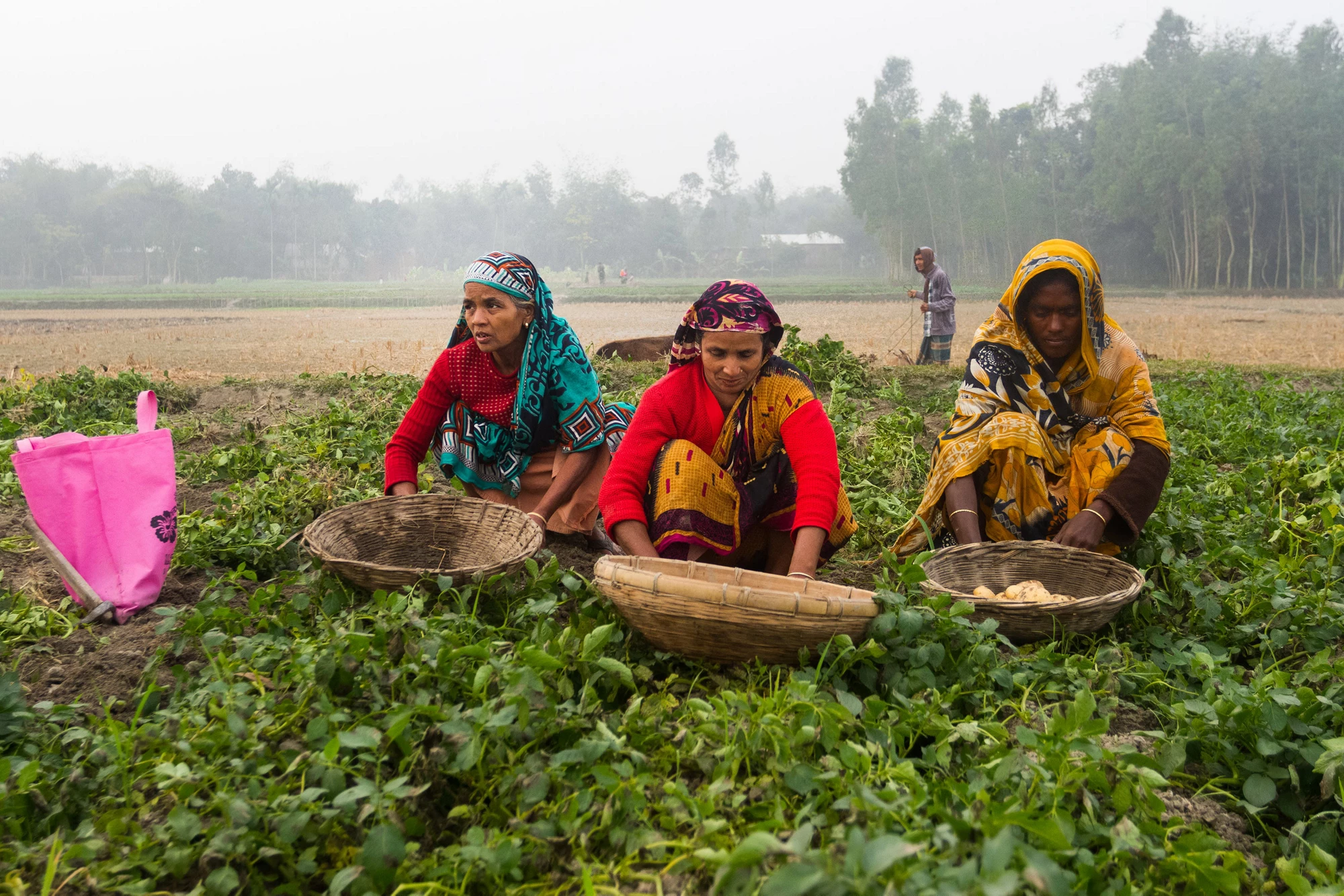 Three Bangladeshi women working in a potato field. Photo: Shutterstock
Three Bangladeshi women working in a potato field. Photo: Shutterstock
“Women in Bangladesh are no less competent than men, and it is time that they get the highest encouragement and support not only from the government but also from their families to get involved in business ,” says, Baliamari Haat, a female vendor from Kurigram in Bangladesh.
Her sentiment echoes through South Asia, a region where women have historically had far fewer opportunities than men in the economic, social, and political spaces, leaving millions of them voiceless and undermining their full potential.
Alarmingly, women in the region have some of the lowest economic activity rates in the world – only 30 percent of women participate in the labor force, compared to 82 percent of men, and a mere 8-9 percent of formal small and medium enterprises (SMEs) are owned by women.
The good news is that this storyline is taking on a new direction.
A study by the International Monetary Fund estimates that South Asia could increase its income by up to 25 percent if women had equal chances as men at getting a job or becoming entrepreneurs .
Beyond the immediate effects on poverty reduction, providing greater economic opportunities to women has a domino effect on other areas of women’s empowerment such as voice within homes, communities, and public institutions.
Done right, regional trade can boost women’s economic empowerment
At present, South Asia is the world’s least economically integrated region: intra-regional trade accounts for only five percent of total trade in the region. This compares to 22 percent in Sub-Saharan Africa and as high as 50 percent in East Asia and the Pacific.
Boosting intra-regional trade in South Asia has the potential to boost women’s economic empowerment.
But expanding intra-regional trade requires providing women and men with equal opportunity to benefit from greater cooperation and exchanges.
This is critical as women’s participation in trade jobs can be instrumental in lifting many families out of poverty, attaining food security, and achieving better human development outcomes.
However, as highlighted in a recent journal article, cross-border trade is not gender-neutral and affects women and men differently since they occupy different parts of the economic space.
Because women and men do not have equal access to education, finance, business networks, and transportation, their ability to respond to new economic opportunities created by trade differs.
Also, seemingly gender-neutral trade barriers, such as deficient infrastructure and cumbersome regulatory and documentary requirements, impinge more heavily on female traders and female-owned firms than on their male counterparts.
This is because of women’s greater time constraints due to their disproportionate responsibility for household and care work.
Making trade work for women
A World Bank study shows the value of creating enabling environments to increase the participation of women in trade activities. One such example is the Bangladesh-India border “haats” (border markets).
Integrating Indian and Bangladeshi women as sellers, buyers and entrepreneurs in this space is highly beneficial for women from nearby villages and towns.
Specifically, the “haats” help women gain a real income and create livelihood opportunities. Over time these trading spaces help improve cross-border relations through deeper people-to-people connects.
This and other studies point to a number of policy recommendations to promote women’s economic empowerment in the context of regional trade expansion.
For example, more inclusive trade in South Asia can be accomplished by strengthening female-dominated sectors with potential for intra-regional trade or supporting women’s transition to higher levels of trade value chains.
Other options include facilitating female entrepreneurs’ access to productive resources and cross-border markets or increasing women’s access to training, information, transportation, and trade networks.
By fostering ecosystems of economic opportunity for women across borders, South Asia can make much progress in boosting its growth and reducing poverty , while paving the way for greater gender equality.
This blog was produced by the World Bank South Asia Regional Trade Facilitation Program (SARTFP) Gender Platform, which seeks to provide deep technical support and knowledge generation and sharing on gender issues—specifically, women’s economic empowerment—in SARTFP-funded activities in Bangladesh, Bhutan, Northeast India, and Nepal.



Join the Conversation